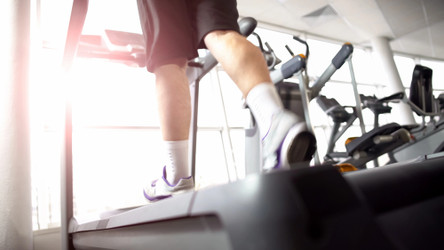How to Exercise While Fasting
Posted by Medical Research Institute on 20th Feb 2025
A Quick Primer: What is Intermittent Fasting?
Intermittent fasting (IF) is a structured approach to eating that cycles between periods of eating and fasting. It's not about what you eat but rather when you eat. The most popular fasting methods include:
- Time-Restricted Fasting: Eating within a specific window each day (e.g., 16:8, where you fast for 16 hours and eat within an 8-hour window).
- Periodic Fasting: Longer fasting periods, such as the 5:2 method, where you eat normally for five days and significantly reduce calorie intake for two days.
- Alternate-Day Fasting: Alternating between fasting and non-fasting days, with some variations allowing up to 25% of daily calorie needs on fasting days.
Intermittent fasting has been shown to support fat loss and metabolic health while preserving lean muscle mass when done correctly.
Fasting and Exercise Metabolism
When you work out, your body primarily fuels itself with carbohydrates and fats. The fuel source depends on factors like exercise intensity, training history, and diet. Lower-intensity exercise relies more on fat, while higher-intensity workouts demand carbohydrates.
Fasting naturally increases fat oxidation, meaning your body burns more fat for energy. However, this doesn't automatically translate to better fat loss—total calorie intake and energy balance still matter.
Which Workouts Are Best in a Fasted State?
Since fasting impacts energy availability, certain types of workouts align better with a fasted state:
- Low-Intensity Steady-State (LISS) Cardio: Walking, cycling, or jogging at a moderate pace (~60-65% of VO2 max) is ideal since your body primarily burns fat at these intensities.
- Short Resistance Training Sessions: Lighter, shorter workouts (~30-45 minutes, lower volume) can be manageable in a fasted state.
High-intensity workouts like sprinting and heavy resistance training rely more on stored glycogen. These are best performed during a feeding window for optimal performance and recovery.
How to Work Out While Fasting
If you're going to train while fasting, you need to be smart about it. Here are key strategies to make it work:
1. Stay Hydrated
Fasting can increase dehydration risks, especially since some of your water intake typically comes from food.
2. Support Electrolyte Levels
Sodium, potassium, and magnesium help regulate hydration, nerve function, and muscle contractions. Since you aren't eating, make sure you're replenishing electrolytes through supplements or zero-calorie electrolyte drinks.
3. Choose the Right Workout Intensity
If you're training fasted, opt for lower-intensity cardio or shorter resistance training sessions. Avoid long-duration, high-intensity sessions, as they rely heavily on glycogen stores.
4. Fuel Smart Post-Workout
Break your fast with a balanced meal rich in high-quality protein.
Tips for Balancing Exercising and Fasting
Intermittent fasting and exercise can work together if you take the right approach. Here's how to optimize your routine:
- Plan Around Your Workout: If you prefer intense training, schedule it toward the end of your fast so you can eat soon after. If you train earlier, ensure your post-workout meal is rich in protein and nutrients.
- Monitor Energy Levels: Fasting can impact energy differently for everyone. Pay attention to how your body responds and adjust your workout timing or intensity accordingly.
- Choose Nutrient-Dense Foods: Don't use fasting as an excuse to eat poorly during your feeding window. Prioritize lean proteins, healthy fats, and complex carbohydrates to fuel performance and recovery.
- Listen to Your Body: Some people thrive on fasted workouts, while others struggle. Experiment with different approaches to find what works best for you.

